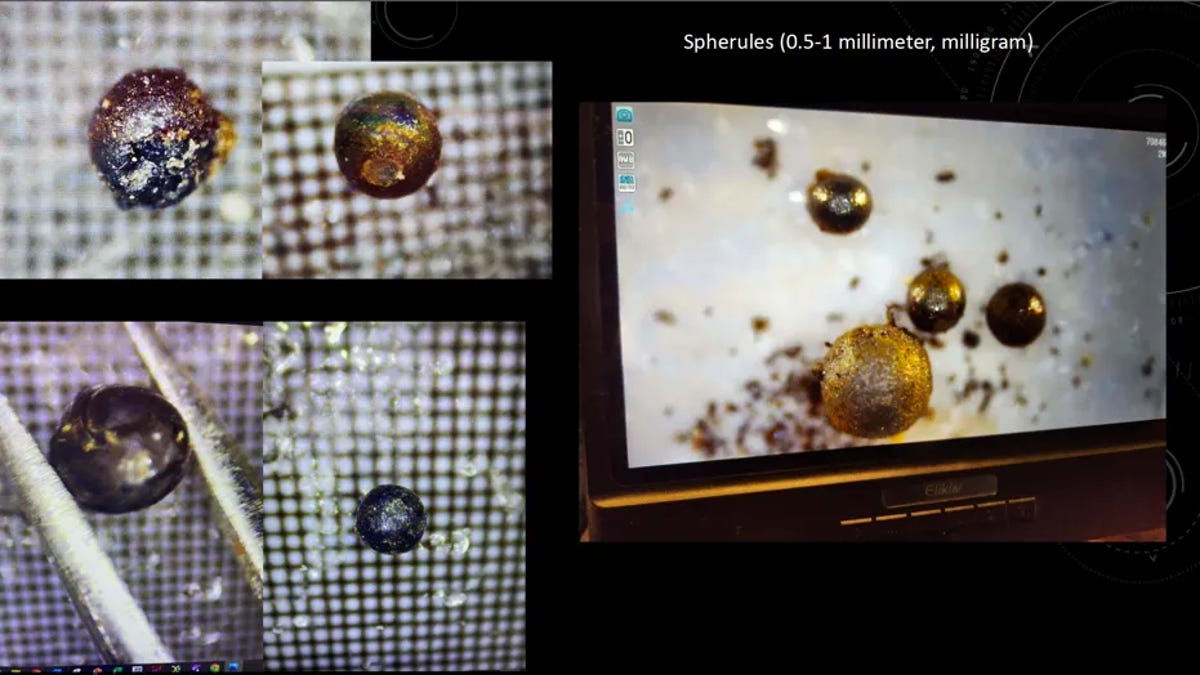They always call these “spheres” because it makes people picture something at least the size of billiards balls…
In reality they’re the size of pieces of sand, and pieces of a meteor will naturally form into those tiny beads because it’s super heated metal crashing from outer space and cooling as they sink to the bottom of the ocean…
Incredibly tiny pieces of a meteor that originated outside of our solar system is interesting.
But Loeb keeps acting like they were made my a form of life outside of our solar system, which there is zero indication of.
Like seeing the Grand canyon, but then insisting it was caused by aliens crashing into the planet.
But Loeb keeps acting like they were made my a form of life outside of our solar system, which there is zero indication of.
The indication is that we know what meteors are made of, and there is no way a meteor would ever survive reentry at the velocity this object did. Any known natural forming alloy would have completely vaporized into nothing. The fact that this object entered the atmosphere at velocities greater than solar escape velocity and peft pieces for us to find is an indication that it is composed of some unknown, very strong alloy.
That is exactly what was now confirmed: the elements found have never been found before in any meteor, nor are there known processes that could have created them naturally.
Whatever entered our atmosphere, survived all the friction and heat and crashed in the sea was either created by a still unknown natural process, or created artificially.
Any known natural forming alloy would have completely vaporized into nothing
So…
You think no meteor has ever landed on Earth?
https://www.cbsnews.com/news/meteor-mcallen-texas-identified-meteorite-nasa-fragment-found/
That one was this year, they’re relatively common.
More than 100 tons of dust and sand-sized particles are estimated to enter Earth from space daily. About every 2,000 years a meteor, the size of a football field hits Earth, causing significant damage.
Again, these “spheres” are the size of grains of sand, and hot metal falling into water causes them to be shaped as spheres, it’s how they made musketballs.
Everything about this is completely normal if you have a 6th grade education in science
Listen - the meteors that fall on earth every day are usually in an orbit similar to that of the earth, at more or less the same velocity. Can you picture that? There’s dust flying around with the earth, at more or less the same speed, and that dust sometimes falls into our atmosphere and lands on someone’s garden. That the normal situation.
This specific object came at the earth two times faster than any star around the solar system is moving. It crashed at the earth moving faster than everything else around us - and pieces of it survived the impact with the atmosphere!
That’s why those spherules are special - regular meteors are made from iron and, if they entered the atmosphere at that speed, they would have competely vaporized. This one impacted the ocean, pieces of it were found, and it turns out it is made of some alloy we’d never seen before (and that’s why pieces of it survived, because it’s not iron like regular meteors).
Do you understand now the significance? I would recommend you read the article before replying again.
Think we call those ‘nodules’, right? Or does that only describe the metalic accretion forms and not these spheres?
Loeb has been calling them “spherules”.



